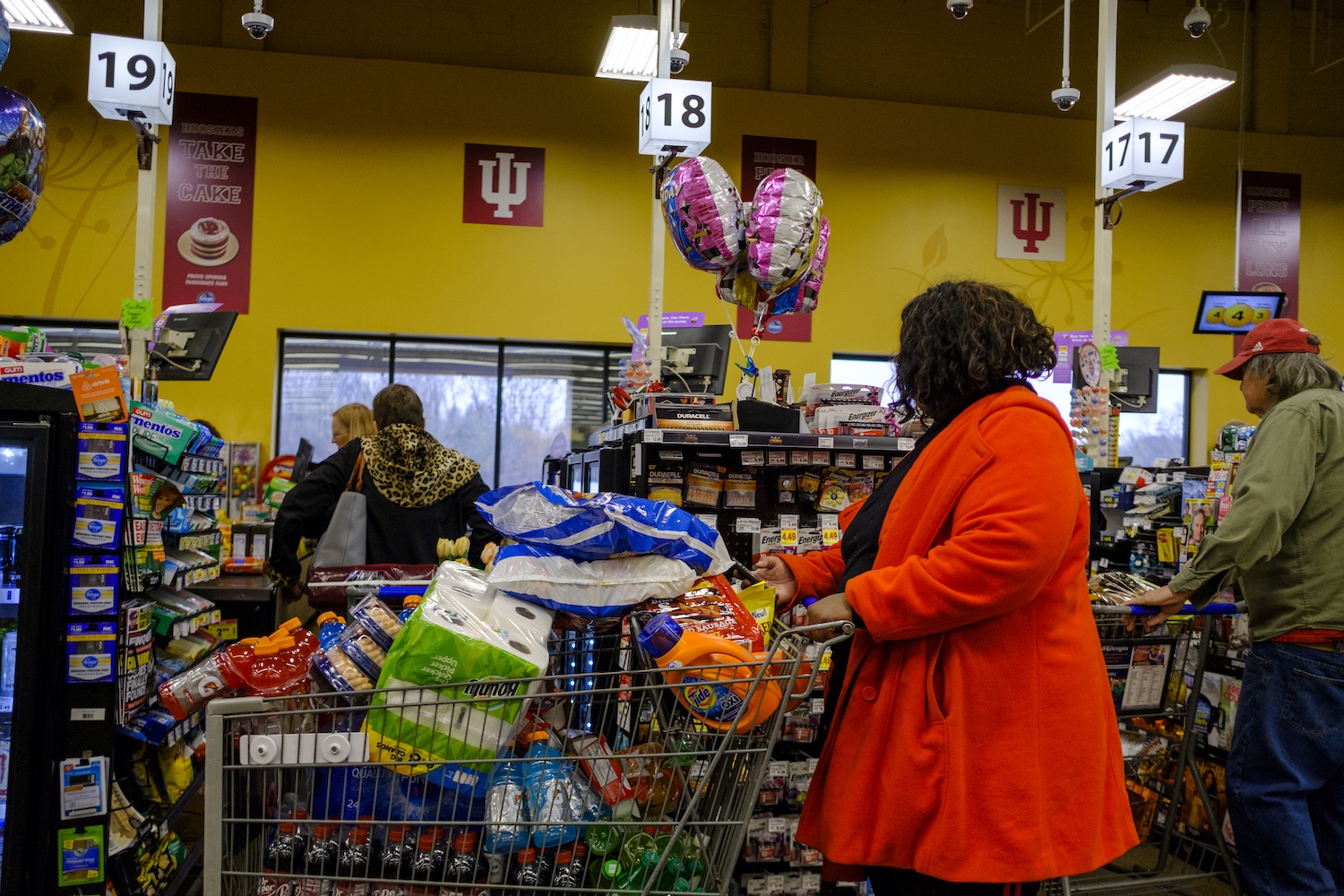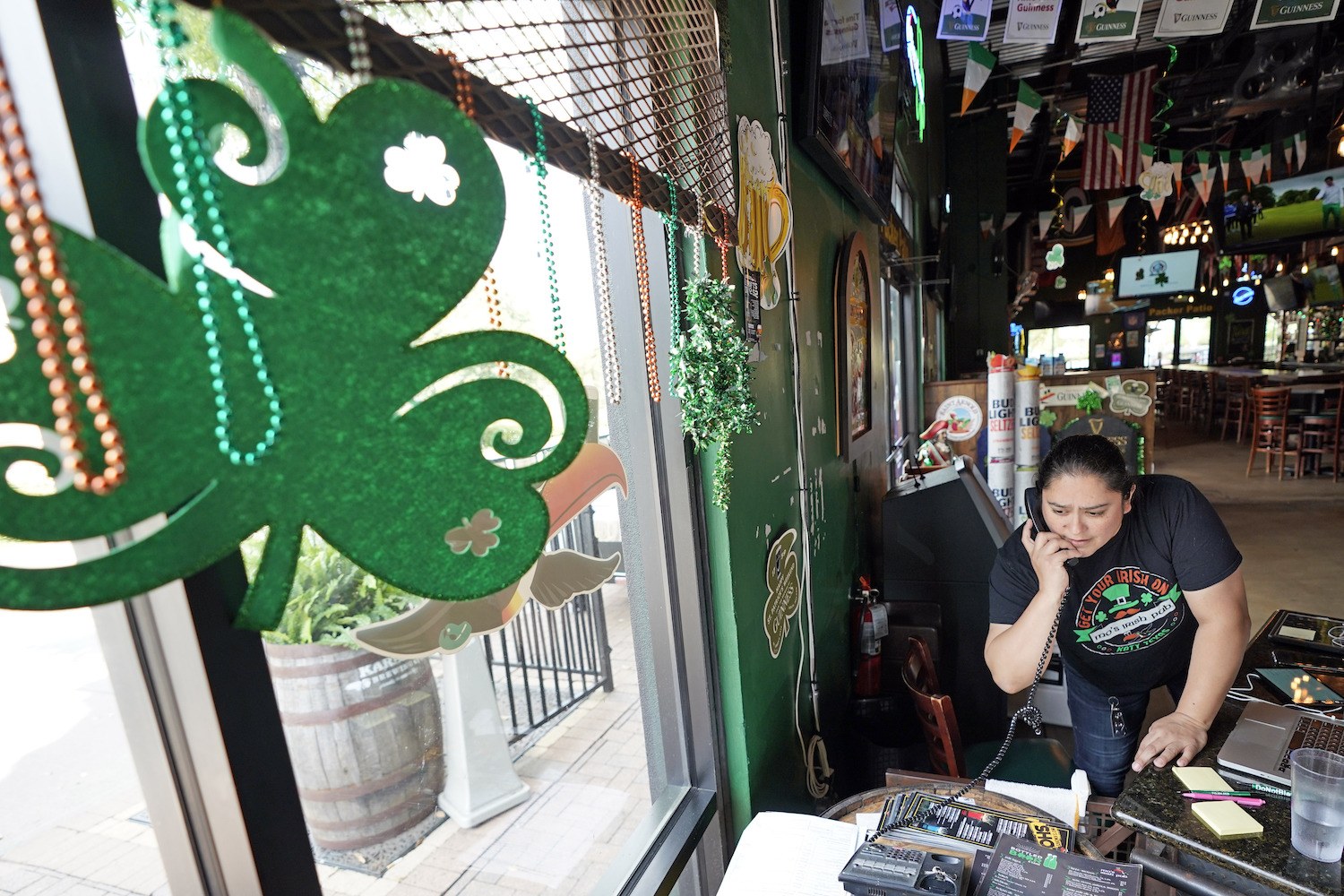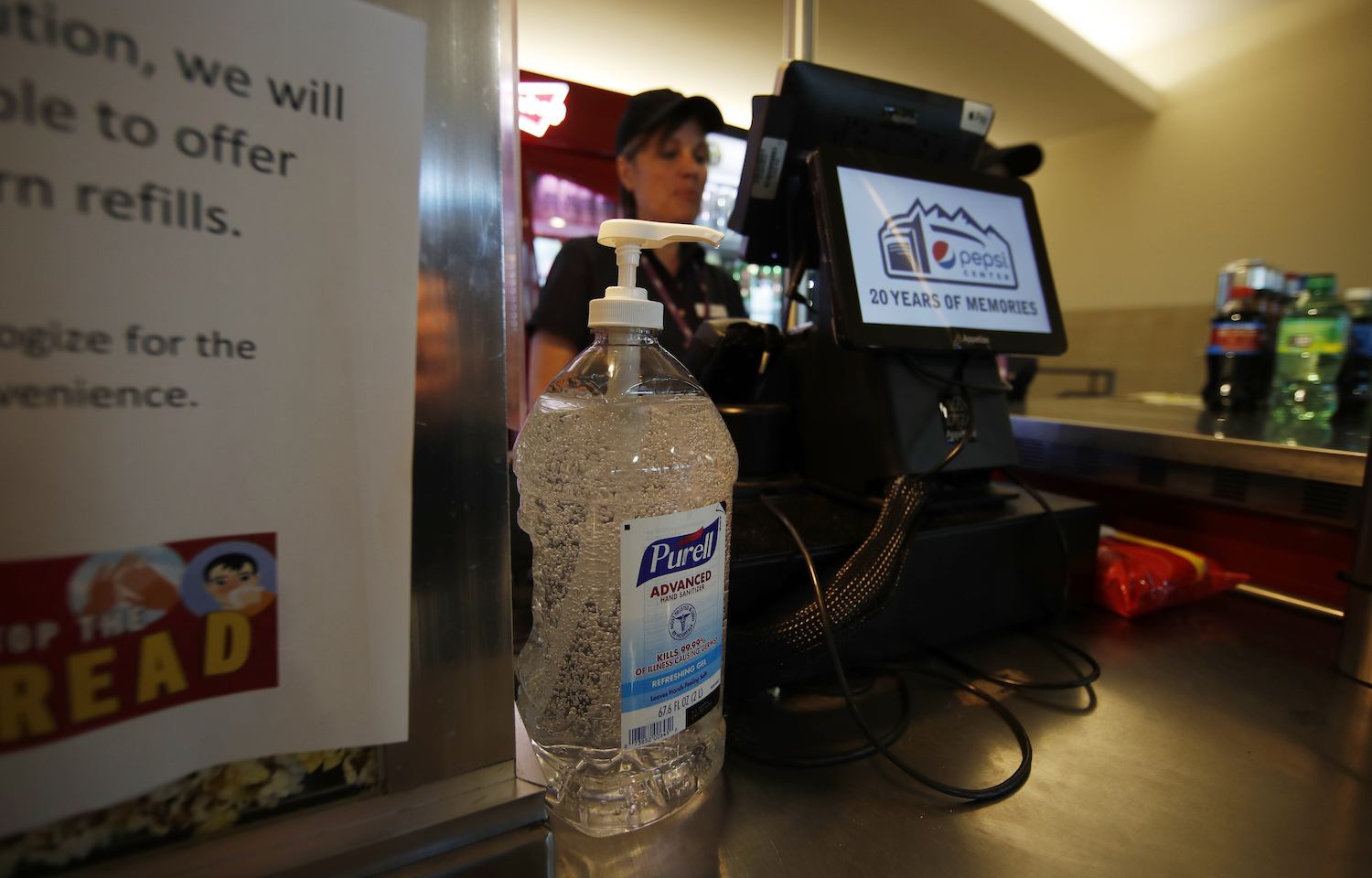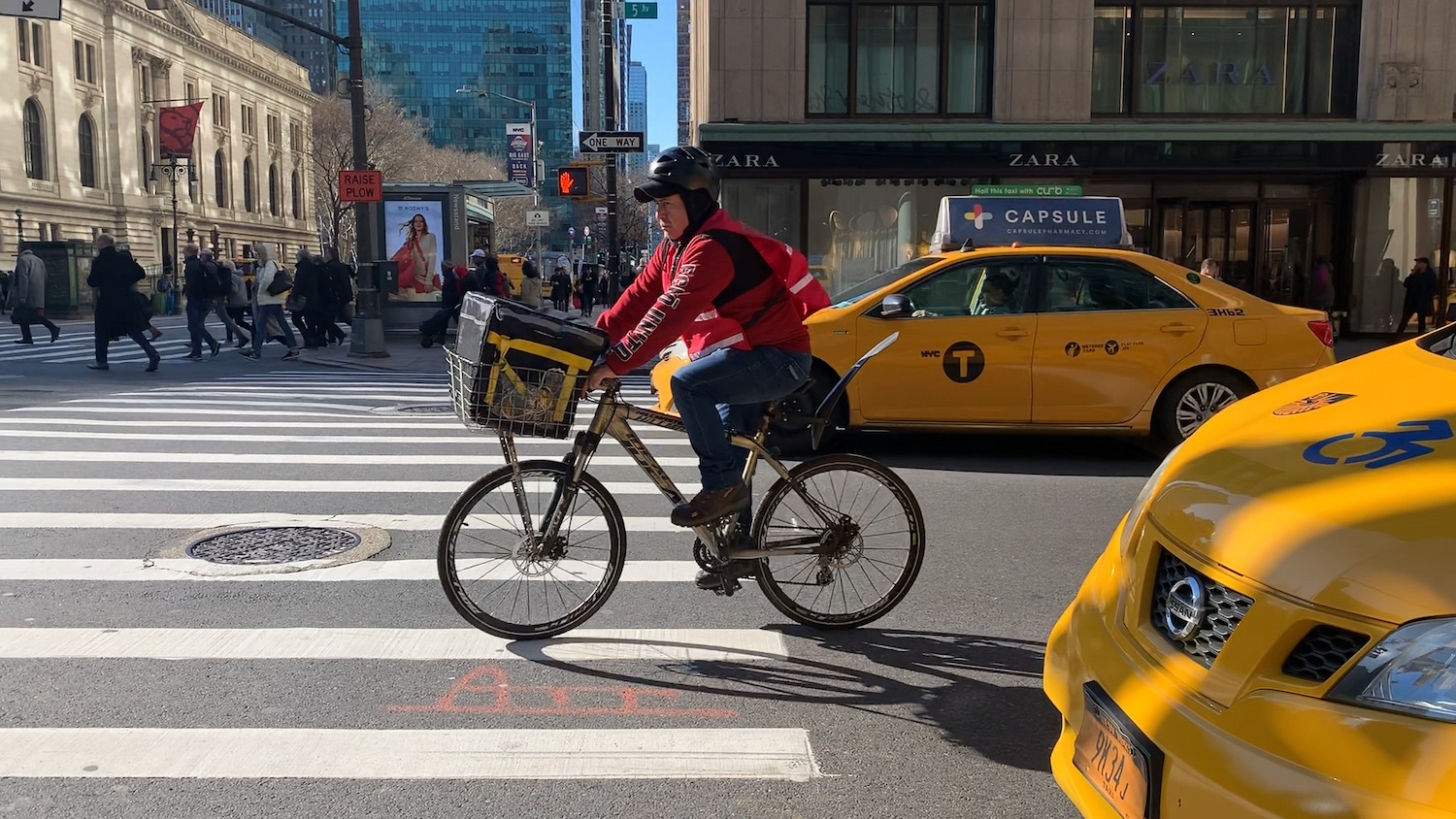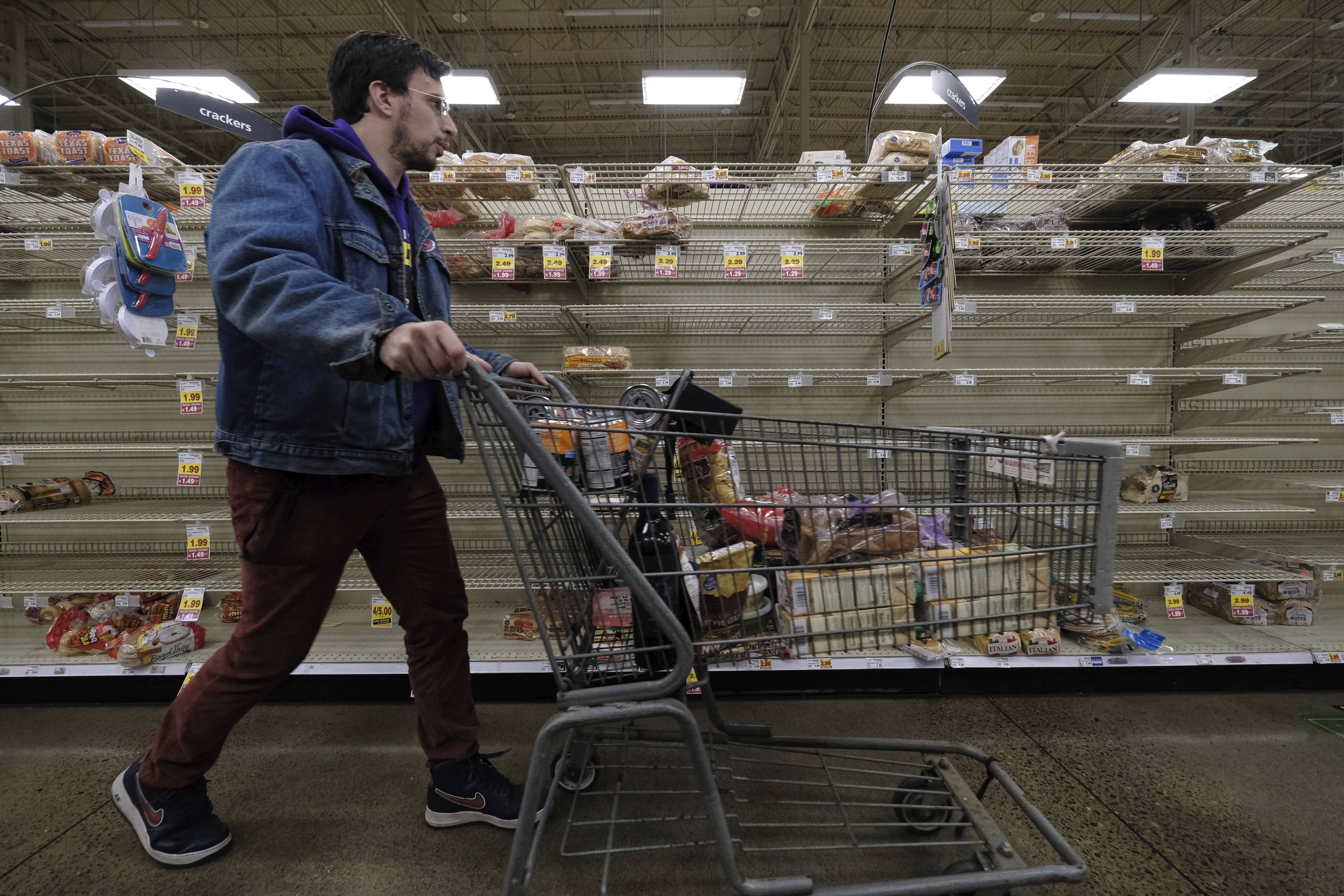
Photo by Alex Milan Tracy/Sipa USA (via AP)
During shared emergencies, shoppers tend to fall back on similar behavior traits in the supermarket aisle. But what happens when the crisis has no end date?
On March 13, approximately one hundred years ago, I watched a couple survey the peanut butter section at a frenzied Star Market in Boston, wrinkling their noses in unison. This was the day President Trump declared a national emergency in response to Covid-19, possibly indicating we could be trapped indoors for months. Almost immediately, grocery stores were bearing the brunt of a human behavior that can best be described as “panic shopping,” which has been decimating entire aisles at mainstream grocery stores across the U.S.
But here in this Star Market full of empty shelves, the peanut butter aisle, remarkably, still had a few dozen jars of the perfect protein-packed, shelf-stable food; I couldn’t understand what was irking this couple.
“We’re Teddie loyalists,” the man said when I asked him, referring to a brand of natural peanut butter that’s manufactured in a nearby Boston suburb. He frantically reached his hand to the back of the shelf to feel around, eschewing both the processed Skippy and organic Santa Cruz jars in lieu of the local, mid-priced option. Jubilantly, he found the last jar of Teddie, grabbed it, and the couple practically ran away.
“The thing about panic-buying is that it gives us a sense of control at a time when we’re lacking that,” says Deborah Small, a psychologist who studies consumer judgment and human decision-making at the University of Pennsylvania’s Wharton School of Business. She adds that things get harried when “people hear that other people are buying something, and they say, ‘Oh, I need that too.’ And it just spirals to this level where we have none.”
But seeing what’s being left behind at grocery stores, like all that unloved Skippy the couple passed over, also tells a compelling story. As beleaguered systems like healthcare, immigration, and labor practices buckle under the weight of an unparalleled pandemic, the cracks being exposed are the ones that have actually always been there—if you knew where to look. The same is true for what the average consumer can now learn about the American food system, plain as day.
What good is Hamburger Helper when the meat section is sold out?
On a basic human level, what’s being left behind shows us what people just won’t eat, even in the worst-case scenario. It’s the large-scale focus group that no one asked for. Across the country it’s clear that despite the growing numbers of Americans reducing their consumption of animal products, alternative proteins marketed as ersatz meat are currently a hard sell, and no one is stuffing their carts with chickpea pasta.
At the supermarket in Boston, I also noticed that beef broth seems to be the least-loved broth, and a canned mushroom is appetizing to few. Products that rely on other products were also left untouched: What good is Hamburger Helper when the meat section is sold out? The current run on stock makes it easier than ever to see, by way of what’s left, that a capitalist, industrialized food system is inherently opportunistic and chock full of products that—on their own, or in a limit-testing crisis—offer limited intrinsic value.
Beyond preferences and comfort-seeking, what remains on shelves also reveals something deeply human: evidence of the short-term thinking characteristic of a fight-or-flight response, where immediate solace—not long-term strategic planning—is the priority. In a Burlington, Massachusetts, Wegmans on March 12, the produce section was nearly entirely wiped out, save for a row of untouched, potted basil plants—the only regenerating produce in the room. From Seattle to Philadelphia, pasta aisles are mostly flat-out except for lasagna noodles, the building blocks of one of the best big-batch, freezer-friendly, we’re-in-it-for-long-haul dishes a person can make.
But even if some of the finer details of strategic planning have gotten lost in the panic, it is broadly clear that people are aware they’re preparing to hunker down for weeks, not days, and that this is a pandemic, not a snow day. Shoppers are mostly prioritizing raw ingredients—like produce, meat, beans, and grains—over prepared foods and snacks. In many freezer aisles, the vegetables are completely gone, but the microwaveable dinners remain, even the pizzas.
“It makes sense because when you’re stuck at home, cooking is one of the ways to distract yourself, kill time, and have some common activities with people you live with,” says Fabio Parasecoli, a nutrition and food studies professor at New York University. “You see on social media, people are posting their meals and discussing recipes. It’s become an important way of keeping some sort of normality and a sense of, ‘Okay, we can’t leave the apartment, but we are able to eat decently.’”
“Do we have a precedent that can tell us how people will behave after two weeks, a month, two months?”
He adds that frozen dinners and snacks can also be the most expensive grocery items, in terms of unit price. While their allure is strong for a time-crunched population with a hectic work schedule, now, when that same population is buying in bulk to stock up for the possibility of weeks at home, the price point becomes a negative and the convenience becomes less relevant. In a way, it feels like a certain class of people remembering what food really is, can, and should be when they’re freed from the constraints of a 9-to-5 life.
“There’s going to be no rush hour during any of this,” says Small. “For city-dwellers that’s obviously a huge reduction in business, in general, but even for people who drive, the traffic patterns are massively shifting.”
As our housebound hours and days all blend together, Small says the sudden absence of rush hour and the relative dissolution of weekends should provide stores a respite from customer swell and a chance to restock. Importantly, this will also allow shoppers to spread out and avoid joining health-hazardous crowds.
Parasecoli notes that the way big-box grocery stores are set up cuts consumers off from truly understanding where their food comes from, making it harder to trust that there’s plenty more food coming to refill those empty shelves. It’s part of what fuels the panic-buying spiral that Small mentioned. But Parasecoli is confident that the empty shelves are largely a reflection of the way that supermarkets rotate stock, which is to say: They don’t keep months worth of food in the back at all times.
Even if the strength of the supply chain isn’t a major concern at the moment, the long-term arc of human behavior might be. Parasecoli, who lives in Fort Lee, New Jersey, just across the Hudson River from Manhattan, recalls that grocery stores looked similar leading up to and in the weeks after Hurricane Sandy, but says the particular contours and outlook for this pandemic is unprecedented.
“When there was Hurricane Sandy in New York, at a certain point food was running out because there were no trucks coming in. At that point, people started freaking out, but that crisis lasted like one week,” he says. “This kind of crisis, I don’t know, do we have a precedent that can tell us how people will behave after two weeks, a month, two months?”
Small is more optimistic that we will learn to adapt, but, crucially, only if we can catch a small break from the ever-changing outlooks for our collective short-term future.
“It is the case that we’re all going to somewhat adapt to this if it goes on for a long time, but there’s so much uncertainty, it’s hard to predict what will happen with people’s behavior,” she says. “But if we can maintain a steady state of life for a few weeks, I think people … will not be as extremely anxious.”
And what better sign that our collective anxiety is lessening than a fully stocked supermarket?

